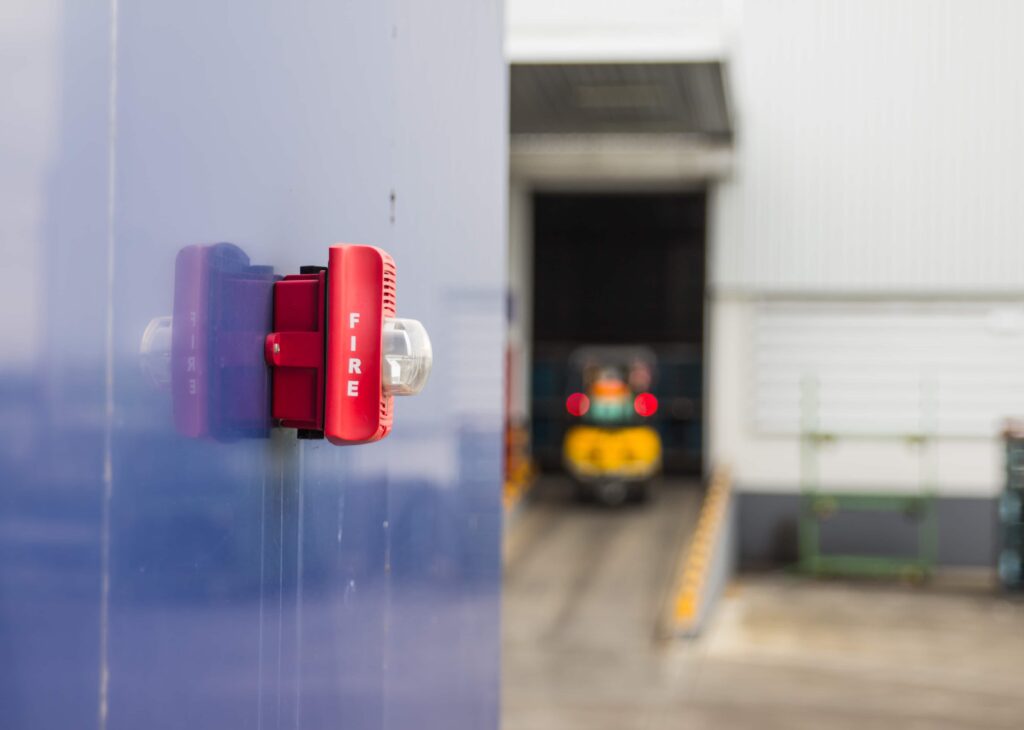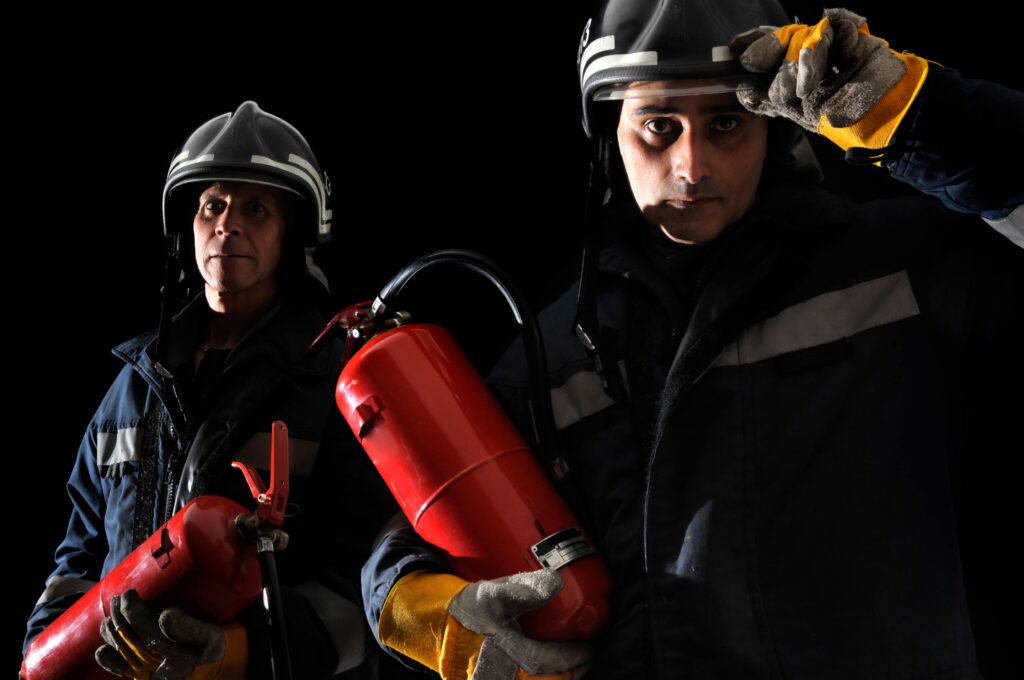Any building that has a sprinkler and/or fire alarm system may be required by the National Fire Protection Association (NFPA) 101 Life Safety Code (LSC) to institute a fire watch in the event that one or both of those systems fail to correctly function as designed.
The LSC requires anyone with a fire alarm system and water sprinkler system to respond to any hindrances in their fire protection system per Chapter 15 of the NFPA 25 Standard for the Inspection, Testing, and Maintenance of Water-Based Fire Protection Systems. This regulation also lists the requirements for how to quickly and effectively take care of sprinkler system issues. In fact, according to Annex A of the NFPA 72 Fire Alarm and Signaling Code, a fire watch is needed in all instances where a fire alarm system is compromised.
Whether due to mechanical, electrical or other type of failure, if your fire alarm or sprinkler system have become unreliable or incapacitated, you most likely need a fire watch on-site in order to avoid fines, liability and potential losses both in assets and human lives should there be an actual fire emergency.
The information that follows in this guide will help you to understand what fire watches are, what they involve, and when they need to be instituted, as well as the options provided to building owners when running a fire watch.
What is a Fire Watch?
Chapter three of the LSC states that a fire watch is the delegation of one or more people with the tasks of:
- Preventing a fire from happening
- Dousing small fires
- Notifying both the fire department and building occupants in the event of a fire emergency
- Protecting the public from fire dangers and other circumstances that puts lives at stake
Fire systems can fail to operate due to interruption in the system’s water supply, ruptured or frozen pipes, general equipment failure, or other issues that are found during a regular system inspection. This code also covers preplanned issues with the system that take effect when the system is purposely turned off for open flame operations like welding, or when the system is purposely disconnected to allow for testing and maintenance.
The NFPA 72 considers a system impairment as any “abnormal condition” that prevents the system or part of the system from functioning properly. Impairments to the following equipment within your system could cause a required fire watch:
- Hose system and fire pumps
- Standpipe systems
- Sprinkler systems, including water spray, mist, and foam-water systems
- Water storage tanks and underground fire service mains
- Water supply interruptions
Interestingly, NFPA standards do not specify how much of the fire protection system needs to be compromised in order for a fire watch to be instituted. However, a fire watch needs to be instituted any time the fire system or part of the system cannot properly operate as it should. It is also required to institute a fire watch despite the nature of the impairment.
Fire Watch Requirements
The NFPA requires a fire watch to be implemented if a system is down for more than four hours in a 24-hour timeframe. Water-based fire protection systems need to be down for 10 hours or longer in a 24-hour timeframe. In either situation, the fire department must be notified. Requirements to these regulations will vary from jurisdiction to jurisdiction as well as authorities having jurisdiction, or AHJs.
It is a common misbelief that fire systems need to be down for more than four consecutive hours prior to the implementation of a fire watch. This is not true. A fire watch is required when the sum of all outages within a 24-hour timeframe goes beyond more than four hours.
During a fire watch, all areas of the affected building must be continuously patrolled for smoke, fire, or any other abnormal conditions. If a life-threatening situation occurs, the person who is conducting the fire watch must contact emergency personnel immediately as well as notify all building occupants to the emergency and assist in safely evacuating them.
Those involved in the fire watch must also inspect unoccupied areas such as crawl spaces, storage rooms, and other hidden areas. Therefore, it’s advised that anyone involved with a fire watch be highly familiar with the building and the equipment that they are keeping watch over. Likewise, they also must know where all manual fire alarm stations and fire protection equipment are located should they need to put out a fire. Every activity that is associated with a fire watch needs to be documented in a log sheet.
Fire watches remain active until the fire alarm system is completely repaired and working properly and after any inspections and tests are completed verifying the system’s correct operation.
Locating and Securing Fire Watchers
Fire prevention systems can malfunction at any time. And when they do, it’s best to have a fire watch policy in place to ensure you act fast to comply with regulations. Building owners have the option to either perform the fire watch themselves by appointing employees to do the job or hiring a fire watch company to take on the fire watch responsibilities. If they decide to use their employees, building owners need to make sure they are following the federal Occupational Safety and Health Administration’s (OSHA) requirements which state that employees need to undergo a detailed training on how to conduct a fire watch. Employees need to know when and how to conduct a fire watch and be provided with the appropriate equipment to wear during the fire watch.
It’s best for building owners to consider these factors when choosing who to conduct a fire watch:
- Business interruption
- Equipment and training costs
- Legal Liabilities
Ensure That Your Fire Watch Policy Measures Up
Fire watch policies can sometimes be complex and confusing due to the many AHJs that need to be notified about system impairments and fire watch implementations. Fire watch policies are a necessary part of your building’s fire protection plan and may be interpreted differently by each AHJ. Contact our company to help you evaluate your current policy to ensure you are securely meeting each and every regulation without worry.

